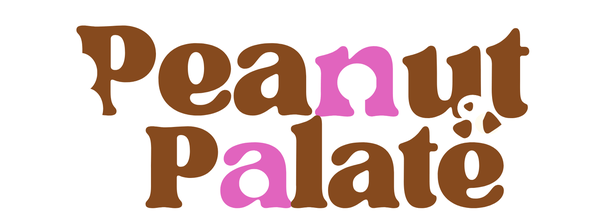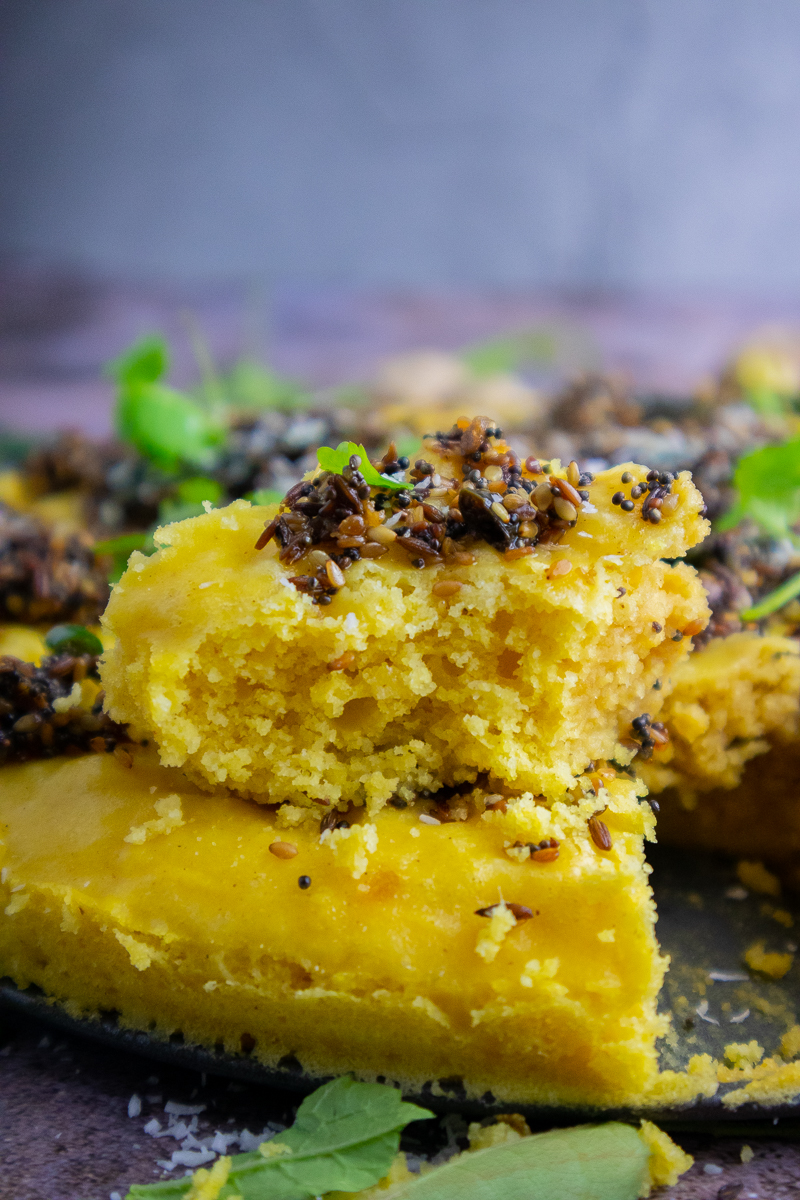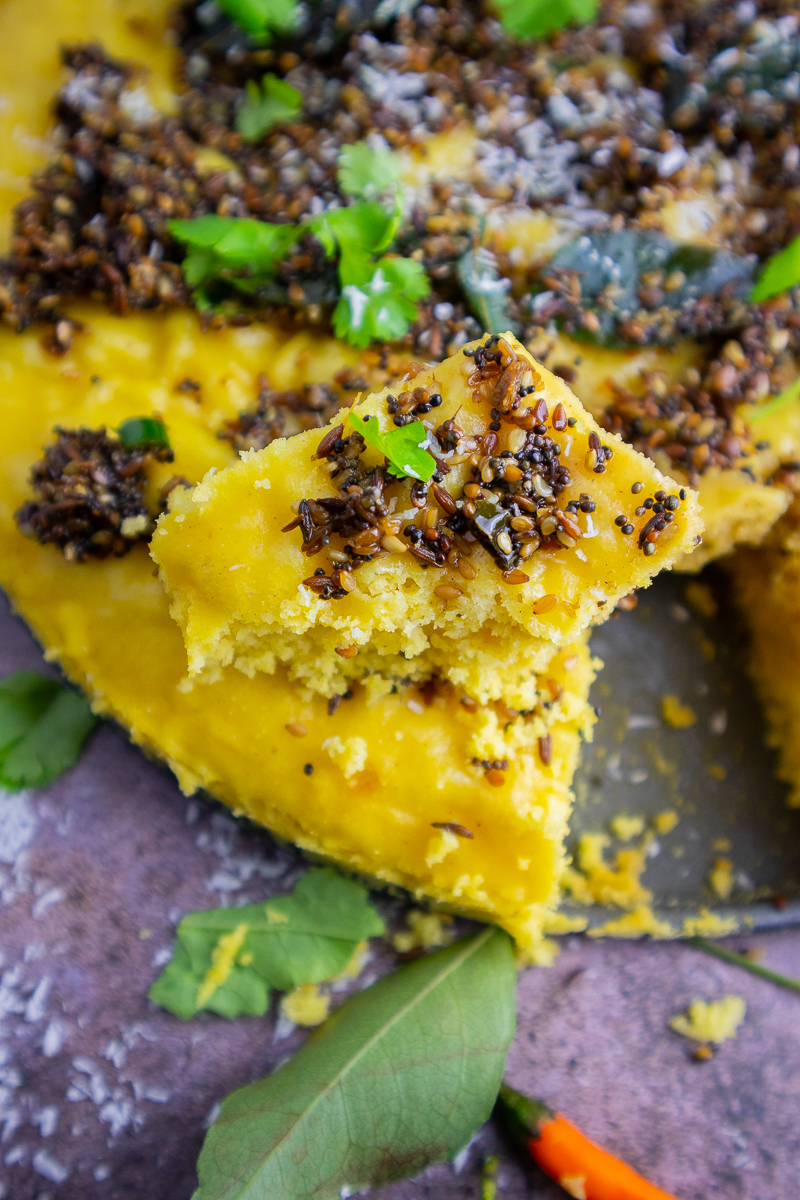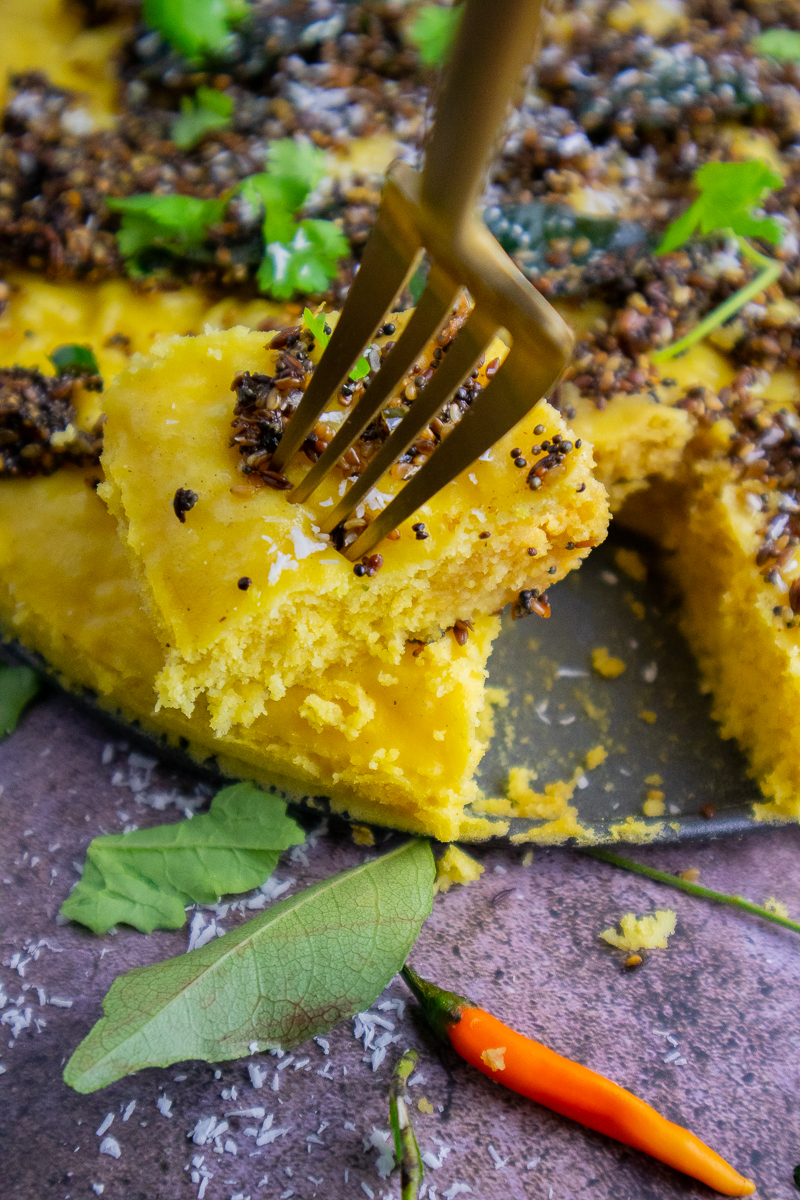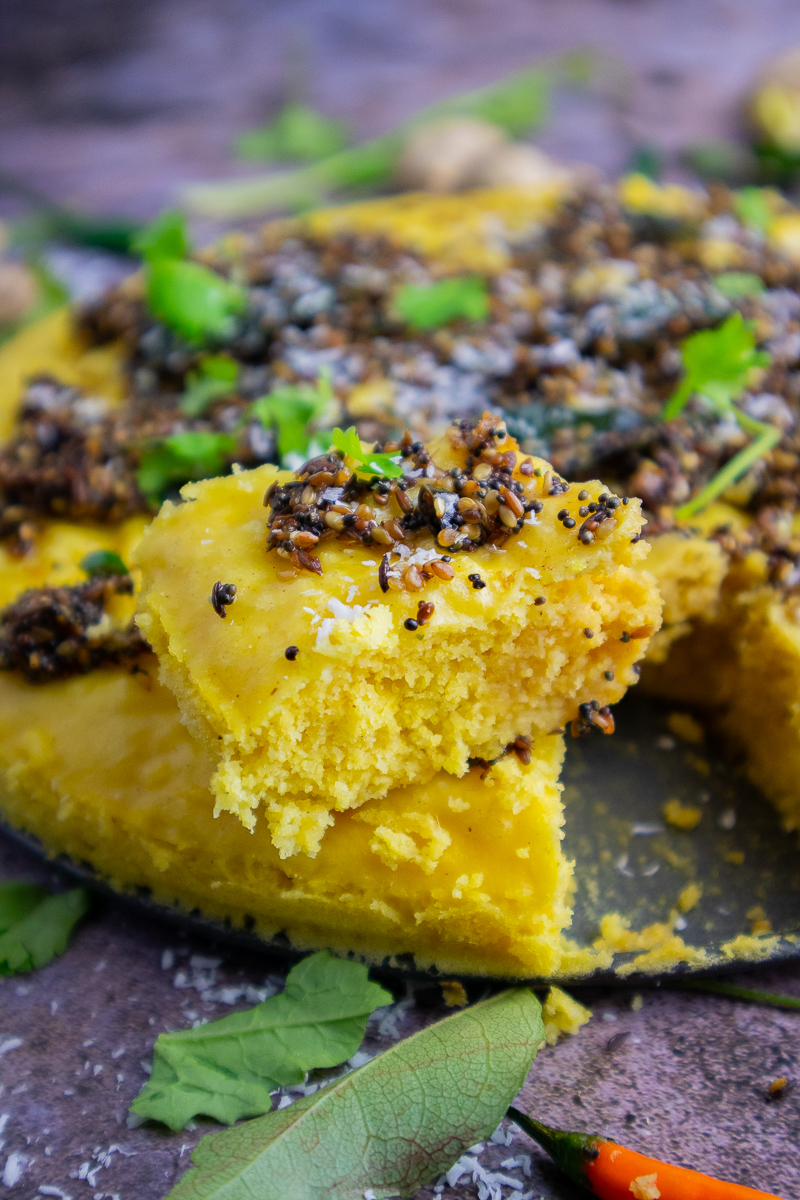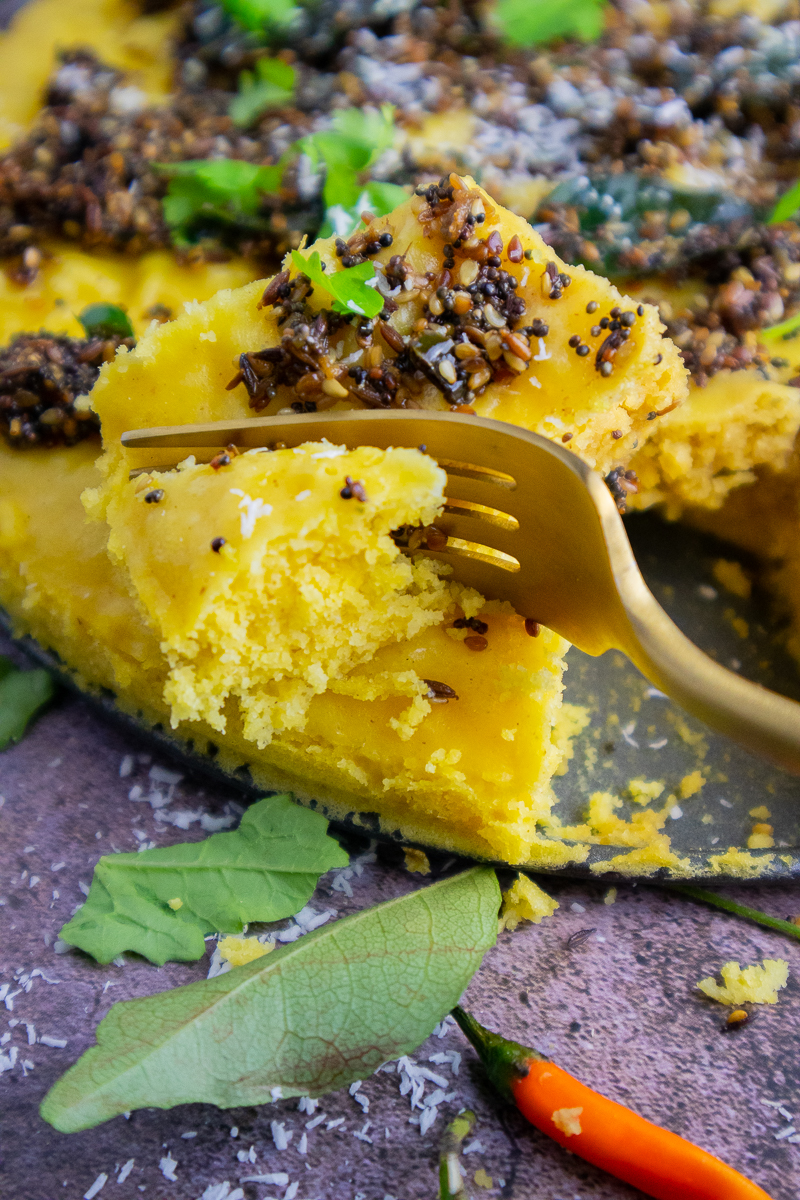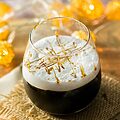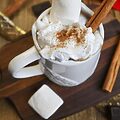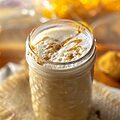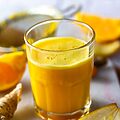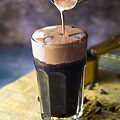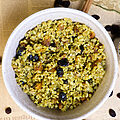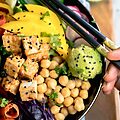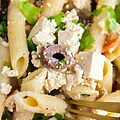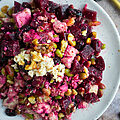Khaman Dhokla Recipe (Soft & Spongy Without Eno)
Today we are making a Khaman Dhokla Recipe (Soft & Spongy Without Eno)! Khaman Dhokla is a soft and spongy steamed snack from the state of Gujarat in India. It’s a popular savory dish enjoyed across the country, often served as a breakfast item, snack, or even as part of a light meal. Khaman, a specific variation of dhokla, is made from chickpea flour (besan), which gives it its vibrant yellow color and a distinct, mildly tangy flavor. While it’s traditionally steamed with the addition of Eno (a fruit salt that helps it rise and become fluffy), this recipe shows you how to achieve that same soft, airy texture without using Eno, making it more accessible to everyone.
When it comes to the difference between khaman and regular dhokla, the primary distinction lies in their ingredients. Khaman is primarily made from besan (chickpea flour), whereas regular dhokla (also known as white dhokla or rice dhokla) is typically made from a fermented batter of rice and urad dal (black gram lentils). While both are steamed and seasoned with a tempering of mustard seeds, curry leaves, and green chilies, khaman tends to be softer and spongier due to its chickpea flour base and the leavening agents used to make it rise quickly. On the other hand, traditional dhokla has a slightly denser texture due to the rice-lentil mixture.
The origins of khaman dhokla are deeply rooted in Gujarati cuisine, which is known for its wide variety of vegetarian dishes. In Gujarat, dhokla has long been a beloved snack, symbolizing the region’s love for wholesome, healthy, and flavorful food. While dhokla has been around for centuries, khaman became popular as a faster alternative, thanks to the use of besan, which doesn’t require overnight fermentation. This variation has since spread across India, becoming a favorite due to its ease of preparation and delightful, airy texture.
Why You’ll Love This Khaman Dhokla Recipe
Achieve Perfect Softness Without Eno: This Khaman Dhokla recipe gives you that classic spongy, melt-in-your-mouth texture without needing Eno or store-bought rising agents. You’ll love how simple kitchen ingredients can still create such a light and fluffy dhokla, making it perfect for anyone who wants to skip the additives.
Perfect for Any Occasion: Whether you’re serving it as a snack, appetizer, or even as part of a meal, this khaman dhokla recipe is versatile enough to impress at any occasion. Its light, airy texture pairs beautifully with chutneys or tea, making it a crowd-pleaser for both everyday enjoyment and special gatherings.
Substitutions
Besan: Besan, also known as gram flour or chickpea flour, is a key ingredient in dhokla. It is made by grinding dried chickpeas into a fine powder and is widely used in Indian cuisine for its nutty flavor and health benefits. You can find this at an Indian grocery store – do not swap in another flour.
Jaggery Powder: Jaggery powder is a natural sweetener made from the concentrated sap of sugarcane or the juice of date palms. It is an unrefined sugar that retains some of the molasses and nutrients found in the raw material, making it a more wholesome alternative to refined sugars. Swap in a vegan white sugar, brown sugar or golden cane sugar (regular white sugar and brown sugar are usually not vegan, because bone char is used in the processing step). You can find this at an Indian grocery store.
Asafoetida: Asafoetida, commonly known as hing, is a spice derived from the resin of the Ferula plant. It has a strong, pungent aroma that, when cooked, mellows into a pleasant, umami-like taste. In dhokla, it complements the mild flavors of the fermented batter (made of rice or chickpea flour) and spices, adding depth to the dish. You can find this at Indian grocery stores, or omit if you don’t have it.
Avocado Oil: Swap in another neutral oil of choice.
Coconut: If you have a fresh coconut, grate this for the recipe. If not, you can buy finely shredded, unsweetened coconut. Sweetened coconut will work as well, but it will make the dhokla sweeter than it should be.
Khaman Dhokla Recipe Notes
- Khaman Dhokla is best served warm or at room temperature, paired with a green chutney or sweet tamarind chutney.
- To complete the experience, enjoy this with a cup of masala chai!
More Recipes You’ll Love
Indian-Style Corn Chaat (Spiced Street Corn)
Masala Spiced Roasted Chickpeas
Chickpea Vegan Cheese Omelette
If you make this Khaman Dhokla Recipe (Soft & Spongy Without Eno), then leave a comment and star rating! Don’t forget to tag your photos @peanut_palate on Instagram. Enjoy!
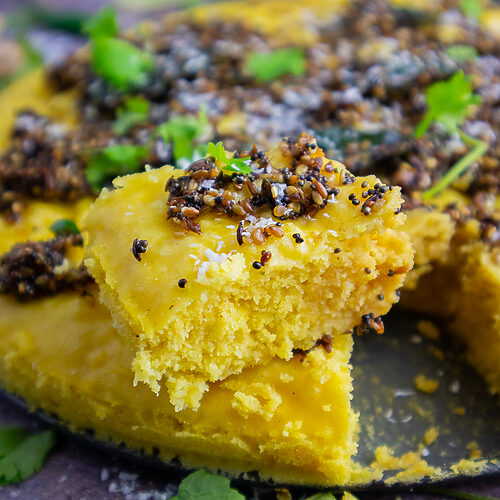
Khaman Dhokla Recipe (Soft & Spongy Without Eno)
Equipment
- 8-Inch Springform Cake Pan
- Whisk
- Wide Pot
- Butter Knife
- Medium Skillet
- Aluminum Foil
Ingredients
- neutral oil eg. avocado oil, for greasing the pan
For the Base
- 1½ cups besan
- 1 tbsp jaggery powder
- 2 pinches turmeric powder
- 1½ tbsp fresh lemon juice
- 1 large green chili, seeds removed blended into a paste
- 1 tbsp ginger garlic paste
- 1 tbsp avocado oil
- 1 pinch asafoetida (hing)
- 1 tsp pink salt
- 1 cup + 2 tbsp room temperature water
- ¾ tsp baking soda
For the Topping
- 2 tbsp avocado oil
- 6 tbsp room temperature water
- 1 tsp mustard seeds
- 1 tsp cumin seeds
- 12 medium curry leaves
- 1 medium green chili, seeds removed blended into a paste
- 1 tsp jaggery powder
Instructions
For the Base
- Grease the cake pan generously with oil.
- Add the besan, jaggery powder, turmeric powder, lemon juice, green chili paste, garlic ginger paste, oil, asafoetida and salt into a bowl. Whisk in the water until smooth.
- The batter should easily flow off a spoon. If it's too thin, add in a tablespoon of besan.
- Bring water to a boil over high heat in a wide pot, filled about halfway. Once the water is boiling, quickly whisk the baking soda into the besan mixture, let it bubble and pour it into the greased pan.
- Place the cake dish in the pot of boiling water. Let it cook for 20 minutes, then lower the heat to medium, cover with a lid fully and cook for another 25 minutes. After this time, check if a toothpick inserted in the center comes out clean. If not, continue to cook for a few more minutes.
- Once it's cooked, turn off the heat. Use a butter knife along the edges of the pan to loosen it up. Place a clean plate on top of the cake pan, then using oven mitts, invert the pan onto the plate. It should easily come out upside down.
For the Topping
- In a small skillet, heat the oil over medium heat.
- Add mustard seeds. Once you hear them sizzling, add in the cumin seeds, curry leaves and green chili paste. Slowly add the water, making sure it doesn't splatter the oil onto your skin.
- Stir in the jaggery powder. Bring the mixture to a boil over high heat.
- Once boiling, remove from the heat. Pour this mixture evenly over the dhokla.
For the Garnish
- Poke hole with a knife throughout the dhokla. Drizzle the lemon juice over the holes.
- Cut into 8 servings.
- Garnish with cilantro and coconut, and serve with chutney and masala chai!
Notes
- Storage
- Once cooled, store in an airtight container, or tightly wrapped in plastic wrap, in the refrigerator for up to two days.
